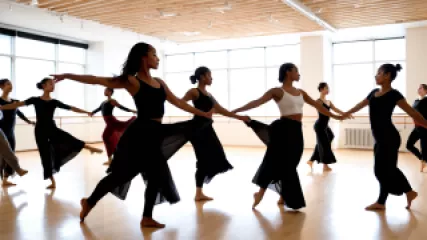The Transformative Power of Dance Movement Therapy for Mental Health
The Transformative Power of Dance Movement Therapy for Mental Health
Opinion Piece
Introduction
Dance has been a form of artistic expression and cultural celebration for centuries. It has the power to captivate, inspire, and move us in profound ways. But beyond its aesthetic appeal, dance has also proven to be a powerful tool for healing and promoting mental well-being. In recent years, the field of dance movement therapy has gained recognition for its ability to support individuals in their journey towards emotional and psychological healing. In this opinion piece, I will explore the transformative power of dance movement therapy for mental health and why I believe it is a valuable therapeutic modality.
The Essence of Dance Movement Therapy
Dance movement therapy, also known as DMT, is a holistic approach to healing that combines movement and dance with psychological and emotional exploration. Unlike traditional talk therapies, which rely heavily on verbal communication, DMT recognizes the body as an essential vehicle for self-expression and healing. Through guided movement exercises, improvisation, and structured dance sequences, individuals are encouraged to connect with their bodies, emotions, and inner selves.
DMT operates on the belief that the mind and body are interconnected, and by engaging in physical movement, we can access and process emotions that may be difficult to express verbally. This non-verbal form of therapy allows for a deeper exploration of the self and provides a safe space for emotional release and transformation.
The Benefits of Dance Movement Therapy
1. Emotional Release: Movement can serve as a powerful outlet for emotions that may be challenging to express through words alone. Dance movement therapy provides a safe and supportive environment for individuals to release pent-up emotions, facilitating catharsis and emotional healing.
2. Body-Mind Connection: DMT helps individuals develop a deeper connection between their minds and bodies. By becoming aware of bodily sensations and exploring movement patterns, participants can gain insight into the relationship between their physical and emotional states. This increased body-mind connection promotes self-awareness and enhances overall well-being.
3. Stress Reduction: Engaging in dance and movement has been shown to reduce stress levels. The rhythmic and repetitive nature of certain dance forms can activate the parasympathetic nervous system, promoting relaxation and reducing anxiety. Dance movement therapy offers a unique avenue for stress relief and can be particularly beneficial for individuals experiencing high levels of stress or trauma.
4. Self-Expression: For many individuals, finding the right words to express their emotions can be challenging. Dance movement therapy provides an alternative form of communication, allowing individuals to express themselves through movement, gestures, and facial expressions. This non-verbal mode of expression can be particularly empowering for those who struggle with verbal communication or have experienced trauma.
5. Enhanced Self-Esteem and Body Image: Engaging in dance movement therapy can foster a positive relationship with one's body and improve self-esteem. Through the exploration of movement, individuals can develop a sense of body acceptance, self-confidence, and appreciation for the unique capabilities of their bodies. This newfound self-assurance often extends beyond the therapy session, positively impacting various areas of life.
The Future of Dance Movement Therapy
As society becomes more aware of the importance of mental health and holistic approaches to healing, the demand for dance movement therapy is likely to grow. With advancements in technology, virtual dance movement classes are now accessible to individuals worldwide, making this therapeutic modality more inclusive and convenient.
Research on the effectiveness of dance movement therapy continues to emerge, further supporting its efficacy as a complementary approach to traditional mental health treatments. By integrating the mind, body, and spirit, dance movement therapy holds the potential to transform the way we address mental health challenges.
Conclusion
The transformative power of dance movement therapy for mental health is undeniable. Through movement and dance, individuals can tap into their inner selves, release emotions, and foster self-expression. As more people recognize the profound benefits of this therapeutic modality, we can expect to see dance movement therapy integrated into mainstream mental health care. Whether in-person or through virtual classes, dance movement therapy offers a unique and powerful approach to healing, making it an invaluable resource for those seeking holistic support for their mental well-being.






